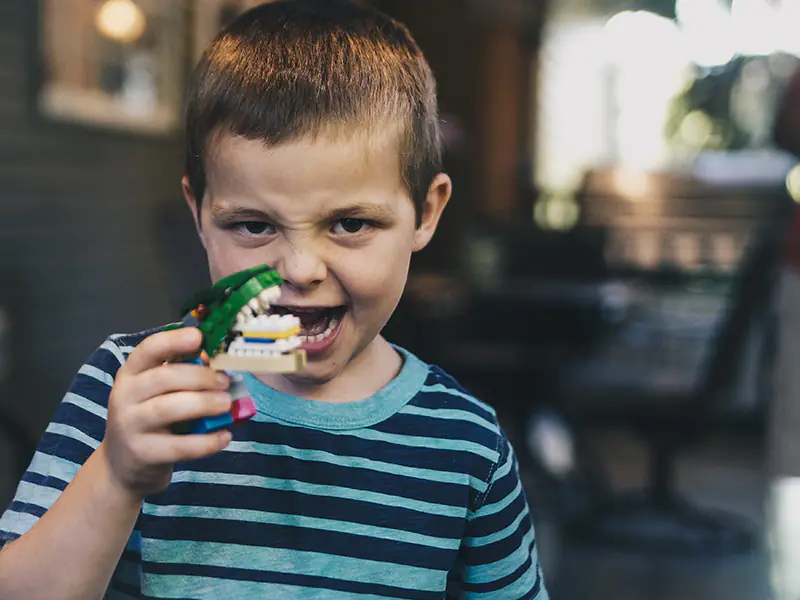Within childcare we see many different expressions of behavior. We find some behavior fun and enjoyable, but sometimes we also see behavior that is less desirable. An example of less desirable behavior is biting.
Biting is normal behavior and common in children under 4 years of age. There is usually a peak in biting behavior around the age of 2 years. Young children use their mouths to eat and drink and to discover what the world around them looks like and works. When teething occurs, children also have a strong need to do something about their painful gums and this causes them to sink their teeth into everything. In addition to these reasons, children can also bite because they cannot yet speak, in self-defense, to have control over a situation, to get attention from another child or adult, because they do not feel safe, love bites (from cuddling to biting) or simply to make contact or because of frustration, inner tension or stress (for example due to changes in his or her environment). Children do not always have all the tools at home to express their feelings in an accepted way and sometimes literally bite away.

Little biters: The learning process of empathy in toddlers
Children of this age do not always have insight into what others feel or think. So they do not always realize that biting hurts someone else or cannot empathize with the pain that someone else feels. Around 15 months, children learn principles and can begin to understand that things are not allowed, such as biting. Children (usually) do not have a conscience at that age, so they cannot remember the rule 'biting is not allowed' when the adult is out of sight. So staying close is very important!
What are you doing did not when a child bites?
Getting angry or punishing. That may sound contradictory and is sometimes very difficult to implement in practice, but if the reason for biting is not completely known, or if a child bites out of an unsafe feeling or out of frustration, the behavior can only get worse. Sometimes they also continue biting because of the attention they receive. They then repeat the behavior because there is a positive reaction for them (namely the attention).
What are you doing then ?
You stop the behavior by naming and rejecting the biting behavior. When you think there is an unsafe situation, you literally remove the child from the situation by picking it up and putting it somewhere else. You disapprove of the behavior, not the child! In addition, it is important to name what you see and to express or demonstrate an alternative behavior. So for example: “I see that you really want a piece of apple. We don't bite, it hurts. You can ask by holding out your hand, just look, this is how you do it. Can I have a piece of apple?” By expressing the behavior and offering an alternative, you teach the child what is desirable. Naturally, you reward this behavior lavishly when you see it. (Note: reward the behavior, not the child! So: “I see you holding out your hand, would you like a piece of apple? You asked that beautifully!” instead of "Well done").
Ultimately, the goal is to offer the child the tools to achieve what he or she wants in a desired manner. Either because the child will master the language better, or by teaching the child to express something in a different way.




